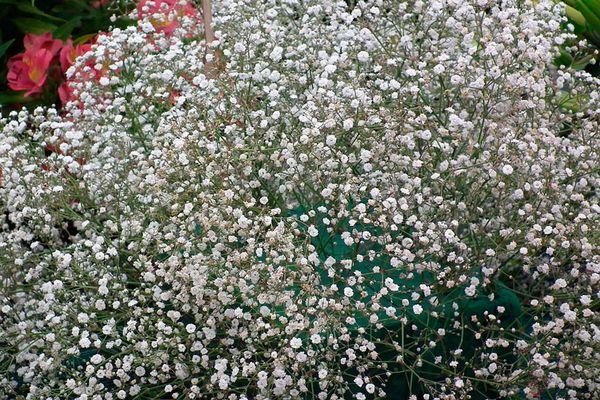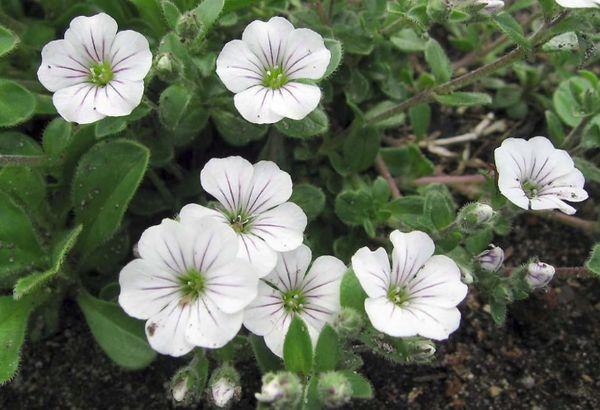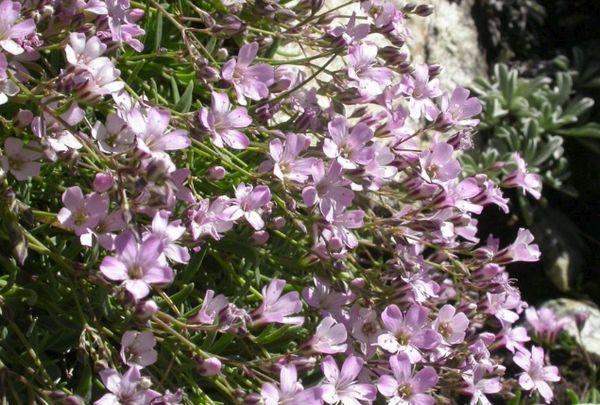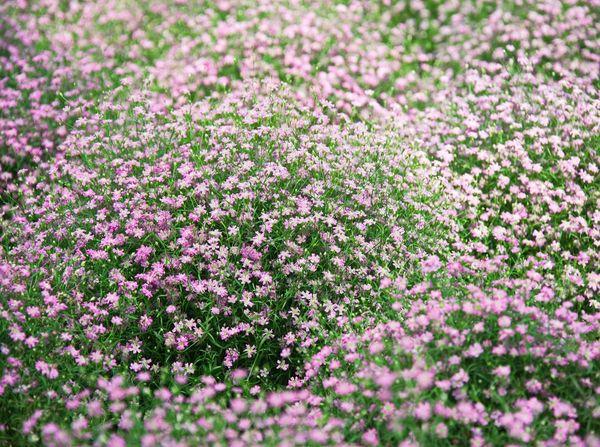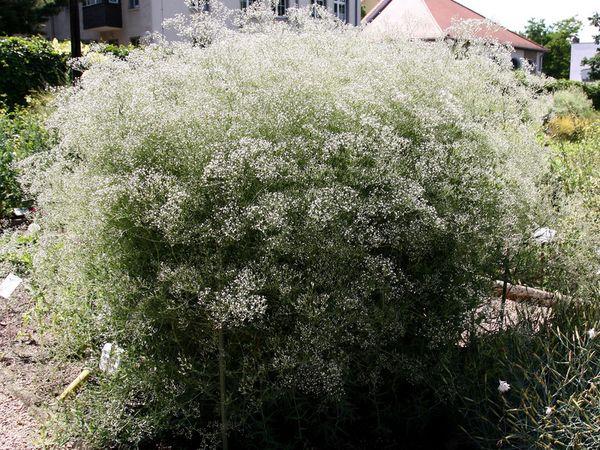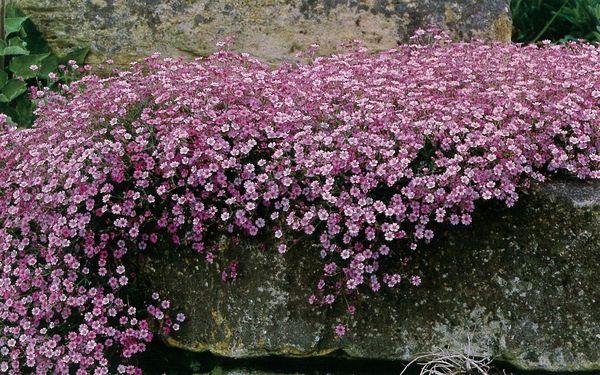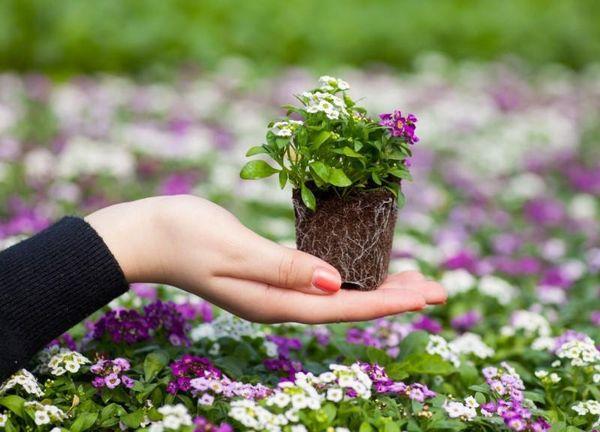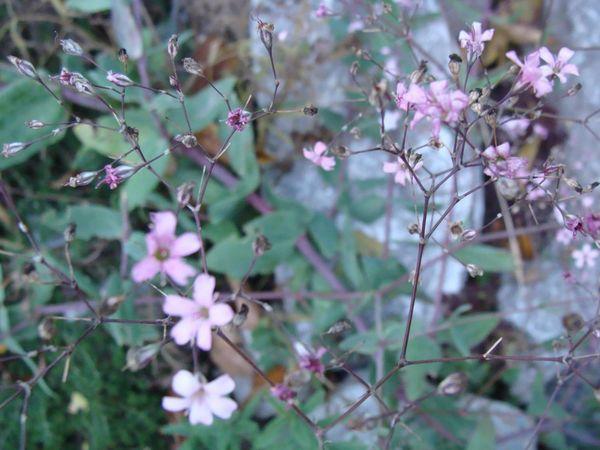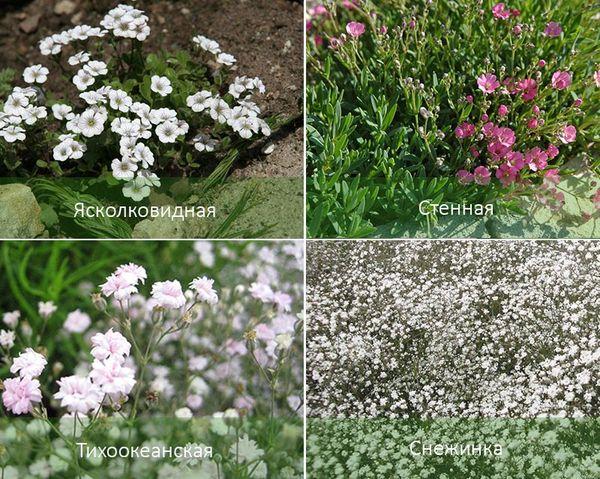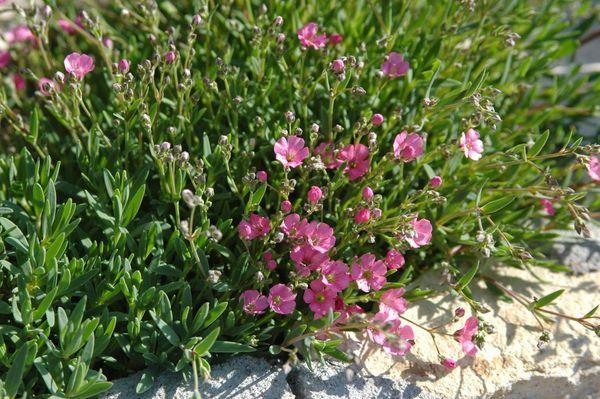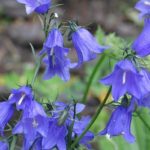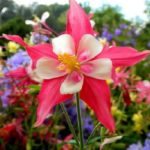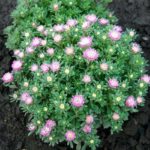Gypsophila belongs to the carnation family. This plant originates from the Mediterranean region, as well as Australia and Asia, but there are varieties that grow in temperate climates. Gypsophila goes well with other flowers, garden bushes and park plants because it is widely used for the design of a summer cottage. To grow perennial gypsophila in a summer cottage, it is necessary to ensure proper planting and care in accordance with the characteristics of this plant.
- Description and features
- Kinds
- Graceful
- Creeping
- Pacific
- Isplicular
- Arecioid
- Tender
- Patrena
- Wall
- Globular
- Terry
- Popular varieties
- Rose
- Carmine
- Double star
- Fretensis
- Monstrosa
- Blush
- snow blizzard
- Fluffy snow
- Cobweb
- Pink haze
- Pacifica
- Rosenschleier
- Aurora
- Panic Rose
- Mirabella
- Snowflake
- Growing from seeds
- Annuals
- Perennials
- Sowing seedlings
- Soil preparation
- Planting scheme
- Thinning
- Planting in open ground
- Selecting a location
- How to plant
- Companions
- Care
- Watering
- Top dressing
- Reproduction
- Vegetative method
- Seeds
- Cuttings
- Diseases and pests
- Rust
- Gray rot
- Nematodes
- After flowering
- Collecting seeds
- Preparing for winter
- Transfer
- Use in landscape design
- Reviews
Description and features
There are seasonal annual and permanent perennial species. The structure of the plant looks like a herbaceous shoot. The root is large, going deep into the ground. Its length can reach 70 centimeters. The stems are erect, thin, with many side shoots. Among the many varieties, there are those that grow close to the ground. They are characterized as creeping, ground cover forms.
The stems are covered with green bark. They have practically no leaves that grow in basal rosettes. The first flowering of the season begins in June. The calyxes consist of five wide white or soft pink petals that have a jagged shape. Each of them has a vertical green stripe. There are 10 stamens in the center of the flower.
After pollination occurs, seed pods are formed. They can be spherical or egg-shaped. Gradually they dry out and swing open into 4 doors. After this, the seeds from the box are poured onto the ground. Their germination persists for three years.
Gypsophila is widely used in landscape design. It goes well with yellow or red flowers.
Kinds
There are 150 species of gypsophila.The following describes the most famous of them.
Graceful
This species is an annual plant. The bushes are spherical in shape and have a height of 50 centimeters. The leaves have a gray-green color. They have a lanceolate shape. Small flowers are collected in loose panicles of white, red, cream or pink.
Creeping
She spreads over the ground. The height of the bush does not exceed 30 centimeters. A large number of very small flowers growing densely. The leaves have an oblong shape. The stem is denser compared to other species. The plant is common in the mountains of Central Europe.
Pacific
Gypsophila grows in China and Primorye. This is a perennial species. It is relatively tall - the bushes grow up to a meter tall. The leaves have a gray-blue color. They are wide, lanceolate in shape. The flowers have a pink, faint, pale color tint.
Isplicular
This gypsophila has highly branched stems and practically lies on the ground. Its height does not exceed 10 centimeters. In June and May, during flowering, the shrub is densely covered with white or purple small flowers. The homeland of this species is in the Himalayas.
Arecioid
The homeland of this species is the mountainous part of Iran. It spreads along the ground, located within three centimeters of the ground. It grows slowly. The foliage has a bluish-green color. Gypsophila flowers are sessile and white. It blooms in July. This species is rare.
This plant prefers to grow in calcareous soil. It loves good lighting. If low temperatures are combined with excessive humidity, it can cause the death of the plant.
Tender
It grows in Altai and Siberia. The height of the bush is 12 centimeters. Small flowers can be white or pinkish in color. The leaves are collected in rosettes.Flowering occurs in July. Grows well in sunny areas. During the growing season it needs constant watering.
Patrena
Distributed in Central Asia, Europe and Mongolia. Usually found on river banks or in steppes on rocky soil. The bush looks almost naked. Straight, branched shoots are woody. The thick root has a curved shape. The leaves are narrow, lanceolate, bluish-green in color. The flowers are rare, white.
Wall
It differs from other species in that it has a single long stem with branches. This structure allows you to grow by clinging to the wall. The leaves are located on the branches in pairs and have a bluish-green color. The flowers of this species are white or pink.
Globular
The flowers are small, collected in spherical inflorescences.
Terry
Known for its white flowers. The height of the bush is 90 centimeters.
Popular varieties
A wide variety of varieties will allow you to choose the most suitable type of gypsophila for your site.
Rose
The inflorescences resemble rose flowers in appearance.
Carmine
The variety gets its name from the carmine-red color of the flowers.
Double star
Blooms bright pink. The height of the bush is 20 centimeters.
Fretensis
This variety is known for its pink double flowers.
Monstrosa
This variety produces snow-white flowers.
Blush
It is a low growing bush with bright pink flowers.
snow blizzard
This variety of gypsophila grows up to 90 centimeters. The branches cascade down to the ground. Small and graceful flowers form a white-pink, lush cloud.
Fluffy snow
The shrub is winter-hardy. Grows to a height of 80 - 100 centimeters. The stems are gnarled and highly branched. This is especially noticeable in the upper part of the bush. Flowers can be double or semi-double.Their diameter does not exceed 6 millimeters.
Cobweb
It is a spherical bush 1 meter high. When flowering, it produces a large number of double white flowers. Flowering time: from June to August. It can grow in one place for 25 years.
Pink haze
This variety has bright pink inflorescences that grow so densely that they almost completely cover the foliage.
Pacifica
Pink flowers are collected in large inflorescences. Pacific gypsophila requires high humidity.
Rosenschleier
The stem of this variety is creeping. Height no more than 40 centimeters. The flowers are white and pink. Flowering continues for two months.
Aurora
This variety has a highly branched stem. The leaves and flowers of these bushes are small.
Panic Rose
Small flowers look like a fluffy cloud. The bushes have different heights from 30 to 120 centimeters. Grows well in intense sunlight in loose soil.
Mirabella
It is a picturesque bush with small white flowers.
Snowflake
This bush grows up to 50 centimeters. It has dark green foliage. Double flowers of snow-white color.
Growing from seeds
When grown from seeds, the first shoots appear after two weeks. You can do this in early spring. At the same time, there will be enough time for the shrub to take root before the onset of winter. Seeds can be purchased at the store or collected yourself.
Annuals
Annuals should be sown immediately before the onset of winter. This is usually done when the temperature reaches zero. During the winter period, the seeds do not develop, but with the onset of spring warmth they begin to grow.
Perennials
Perennial plants are grown differently than annual plants.
Sowing seedlings
In order to grow seedlings, seeds need to be planted in boxes. You can also use peat pots or a container filled with substrate for this purpose. This is usually done until the end of March or mid-April.
It is first recommended to either water the soil with hot water or add a growth stimulator to it. The seeds are placed at a depth of no more than a centimeter. Immediately after this, it is recommended to cover them with glass or transparent film. Suitable lighting must be provided.
Ventilation is carried out once a day. To do this, the glass or film is removed, allowing the sprouts to breathe air.
Planting in open ground is possible only after the leaves appear. This usually happens in May. Then the sprouts are planted each in a separate bowl.
Soil preparation
Choosing the most suitable soil for this plant is important because it is very difficult to transplant. In most cases, gypsophila grows in the same place for 25 years. You need to choose a place that will give space for plants to grow. It is not recommended to use lowlands for planting, as excessive humidity is dangerous for these flowers.
It is important to provide good lighting. Gypsophila needs a lot of light.
It should be borne in mind that acidic soils are undesirable for planting these flowers. To plant, you need to drain. You can use small pebbles for this. If the soil is too acidic, you will need to add lime to it (at the rate of 30-40 grams per square meter). This place is being raked. It will be useful to add sand and humus.
Planting scheme
When planting in boxes, the seeds are distributed randomly.
Thinning
As they sprout, the sprouts are thinned out. Now you need to ensure that the distance between them does not exceed 15 centimeters.
Planting in open ground
Selecting a location
For planting, you need to choose a dry and well-lit area. It is advisable to add humus and a little lime to the soil. On the site, groundwater should not be too close to the surface.
How to plant
When planting in open ground, provide a certain distance between plants. If the seedlings are arranged in one row, then the minimum distance between them should be 50 centimeters. If you plan to plant gypsophila in several rows, then in each row the plants should be at least 70 centimeters apart from each other. In this case, the rows should be located no closer than a meter.
During the first few years, you can safely transplant the bush to a new location. If this is done in the future, the gypsophila may die.
Companions
When planting gypsophila, you need to take into account that it goes well with various plants. Godetia can be used as companions for her. Tulips. Marigolds and other plants.
Care
At the end of the growing season, it will be necessary to prune, leaving the trunk of the shrub and a few main branches.
Watering
In summer, gypsophila requires systematic watering. In this case, you need to pour water directly under the root.
Top dressing
During the spring-autumn period, fertilizing is required several times. A mineral complex for this purpose can be purchased at a flower shop. Fertilizing is done up to 4 times per season. You can use mineral or organic fertilizers. In the latter case, it is not recommended to use manure.
Reproduction
Annual plants can reproduce only by seeds.Perennials can use the same method and also propagate by cuttings.
Vegetative method
The grafting method can be used. For the rootstock, a variety of gypsophila with simple flowers can be used.
It is also possible to use propagation using root layering. They must be separated from the plant and transplanted to a new location.
Seeds
Sowing of seedlings is done until the end of March. This method of propagating gypsophila is suitable for both annual and perennial plants.
Cuttings
To obtain a cutting, you need to cut the branch in early spring. The rooting percentage for gypsophila is 20%. Treating the cuttings with heteroauxin will increase the chances that it will take root. It is recommended to cover it with a jar after planting and darken it.
It is important that watering is systematic, but not excessive.
The time for planting in open ground is selected so that the plants have time to take root before the onset of cold weather.
Diseases and pests
If poorly cared for, gypsophila can be attacked by fungi or pests. In this case, it is necessary to take measures to treat it.
Rust
In this case, it is necessary to use an appropriate fungicidal agent.
Gray rot
To combat gray rot, oxychome, Bordeaux mixture or copper sulfate can help.
Nematodes
To destroy them, it is necessary to spray them with phosphamide several times. If this does not help, you need to dig up the plant and rinse the roots in water at a temperature of 50-55 degrees.
After flowering
Gypsophila delights viewers with luxurious flowers. However, there comes a time when flowering ends and it is necessary to take care of the bushes of this plant.
Collecting seeds
To collect, you need to wait until the seed pods appear and remove them, then place them on a clean sheet of paper, allowing them to dry well. After this, the seeds are poured out of the box and stored in paper bags.
Preparing for winter
Most species and varieties of gypsophila have high frost resistance. Despite this, helping plants during cold weather will be useful. To do this, they will need to be covered. In areas where winters are mild, there is no need to take any additional measures to overwinter the plant.
Transfer
The plant does not tolerate transplantation well throughout almost its entire life, with the exception of the first years. Only at this time can you move gypsophila to a new place. The plant must be pruned in late autumn so that it blooms with renewed vigor in the spring.
Use in landscape design
When gypsophila is grown next to ornamental grass near bright flowers, it looks beautiful. These flowers are also usually used to decorate an alpine hill or to mark the edge of a lawn. In the latter case, this creates a feeling of space.
Reviews
Inna 39 years old, Kaluga
In April, I planted the seeds of the Aurora variety in a box. I didn’t put it on the window. Two weeks later I transplanted. It grew and bloomed the same year.
Olga 47 years old, Ivanov
I planted gypsophila in boxes, first pink, then white. I did not add additional lighting or heating. The windows face south. The seeds germinated poorly, but after transplanting into the ground they bloomed magnificently.

